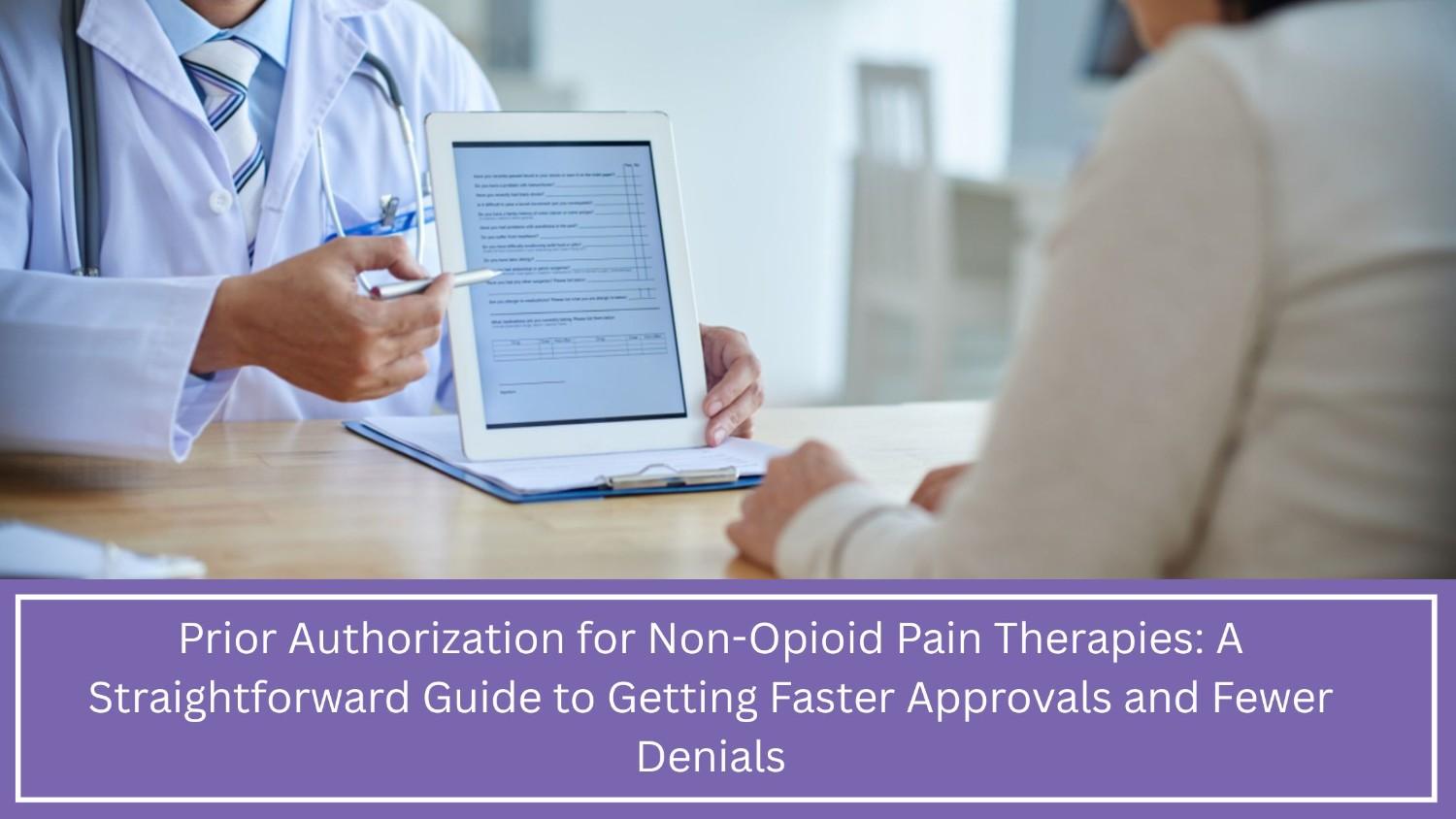Seamless EHR Integration The Key to Billing Success in 2026
Seamless EHR Integration The Key to Billing Success in 2026. In plain terms, your EHR and your billing system are the nervous system and the heart of your practice. If signals don’t flow cleanly between them, claims get mangled, denials spike, patient balances surprise, and staff spend hours on rework. Integration isn’t a nice-to-have — it’s the single most important factor for billing success next year. Below is a walkthrough of why the handoffs matter, what “seamless” actually looks like, the tech checklist you must insist on, the people and process changes that make it stick, and the realistic quick wins you can deliver fast.
Table of Contents
1) Why Integration Matters Now — the Handoffs that Bleed Revenue
Most medical billing losses aren’t dramatic one-offs; they’re tiny, repeated mismatches that snowball. A few examples you’ve seen a hundred times:
- The clinician documents “knee pain” in the note, but the coder can’t see the imaging order or result that justifies a higher-level CPT — the claim gets downcoded.
- The front desk takes a co-pay but the eligibility check was done manually at intake and missed that the patient hit a deductible — surprise balance calls and refunds.
- Prior authorization was actually approved, but the auth number never made it into the claim because it wasn’t synced — payer denies.
Those are all handoffs: data moving from system A (EHR) to system B (RCM/payer portals). When that handoff is slow, lossy, or manual, you pay in denials, delayed collections, and wasted staff time. The industry is already shifting to API-first approaches and regulatory pressure is following: CMS and other regulators have been pushing API-based interoperability and stronger healthcare prior-authorization data exchange, which makes integration both a compliance and a revenue priority.
The reality is blunt: each broken handoff is cash left on the table, and the cumulative effect is what turns an otherwise healthy practice into a cash flow problem.
2) What “Seamless” Looks Like in Practice
“Seamless” is a business outcome, not a checkbox. It means the following behaviors are true in your live workflows — not just on a slide deck.
Real-time eligibility at check-in. The coverage response (copay, deductible, benefits, out-of-pocket) arrives within the front-desk workflow so patients and staff know what will be owed. No guessing. Real-time eligibility tools are now mature and support both traditional X12 270/271 flows and modern API approaches; implementing them reduces surprises and speeds collections.
Order-to-billing traceability. Every order (imaging, labs, procedures) must be traceable from the clinician chart through to the claim line. If a coder needs context on why a high-level CPT was used, they should click from the line item to the signed order, result, and note excerpt. That traceability kills “why did you code that?” back-and-forth.
Coded documentation synced to claims. The ICD/CPT/modifier set the clinician signs in the chart should flow to the RCM engine intact — including any supporting documentation links required for appeals. Modern standards like FHIR include resources (e.g., ExplanationOfBenefit, Coverage) that make it possible to model this flow consistently. Use them.
Audit-ready trails. Timestamps, user IDs, order IDs, and transaction IDs should travel with every transaction so you can reproduce a claim’s lifecycle if a payer asks. Without this, you’re guessing in appeals.
When those pieces work, first-pass acceptance climbs, denials fall, and time-to-payment shortens. Integration turns manual guesswork into deterministic data pathways.
3) Tech Checklist — What to Require from Vendors (and sample acceptance tests)
If you’re buying or validating integrations, don’t rely on vendor promises. Require these technical capabilities and test them.
Must-haves:
- FHIR support: Confirm your EHR and RCM vendor support the CMS-referenced FHIR resources you need (Patient, Coverage, ExplanationOfBenefit, Healthcare PriorAuthorization, Claim, ClaimResponse). FHIR is the lingua franca for modern API interoperability.
- Real-time eligibility & standards compatibility: Support for 270/271 X12 transactions and/or RESTful eligibility APIs (FHIR Coverage / specialized vendor APIs) so you can run checks at check-in.
- Bulk export & reconciliation: Systems should allow batched export of visits/claims and reconciliation reports with unique IDs to match claims to visits.
- Observability & error logs: Request request/response logs, error codes, and match-failure reasons with timestamps (retain enough history for audits).
- Vendor SLAs: Define uptime, API response-time targets, and acceptable error rates with remedies. Don’t accept vague “we’ll fix it” language.
- Security & PHI handling: Encrypted transport, audit logging, role-based access, and signed BAAs.
Sample acceptance tests (with pass/fail criteria):
- Eligibility query test: Submit 100 eligibility requests during a simulated peak; ≥95% responses within 4 seconds; ≤2% hard failures.
- Order-to-claim trace test: Create 50 orders in the EHR; for each order, confirm a claim line is created with matching order ID and a working documentation link. Pass if ≥98% match.
- Claim submission & acknowledgment: Submit 200 claims via the pipeline; ≥97% receive 277/999-like acknowledgments within the standard window.
- Error recovery test: Simulate a payer endpoint failure; system retries per policy and notifies the ops team when retries exhaust. Validate that no duplicate claims are created.
These acceptance tests are brutal but necessary. If the tests fail, your vendor’s integration is not ready for production.
4) People & Process — Where you’ll Need to Change Habits
Integration is not a technology-only project. Most failures happen because humans keep doing things the old way.
Clinical documentation templates. Build note templates that capture the structured fields healthcare RCM services needs: order IDs, indication, laterality, severity, and planned procedures. Structure reduces ambiguity and speeds automatic mapping.
Coder access to chart context. Give coders read-improved access (not full clinical write access) so they can grab the rationale behind a charge without routing requests. This reduces queries and speeds coding decisions.
Front-desk scripts + workflow buttons. Equip staff with scripts and one-click workflows to act on eligibility results: collect copays, flag complex benefits, or schedule a benefits verification follow-up. Train them on what to do when the system returns partial or missing data.
Continuous monitoring & feedback. A lightweight monitoring cadence — daily exceptions digest, weekly integration KPI review — keeps things honest. Track denial drivers, response latencies, and mismatch rates. Celebrate wins: lower denial counts, faster PA turnarounds — people comply when they see the payoff.
Change management. Don’t push changes as “IT upgrades.” Communicate why template tweaks or new intake steps reduce rework. Show staff concrete wins — less manual rekeying, fewer angry patient calls — and align incentives.
People and process changes are the multiplier that turns an integration project into an operational capability.
5) Quick Wins & the Long Game
Integration is a capability you build incrementally. Start where you’ll see fast ROI and expand.
Quick wins (30–90 days):
- Real-time eligibility at check-in. Implement eligibility checks and display results in the intake workflow. Immediate impact on point-of-service collections and fewer balance surprises.
- Prior authorization integration. Automate PA submissions and capture authorization IDs directly into the chart/claim. This is one of the highest-ROI fixes for denial reduction; regulators are already pushing more structured PA flows.
Medium/long-term (90–365 days):
- Automated claim edits & upstream scrubbing. Push claim-level edits upstream into the advancedMD EHR so scrubbing rules are tied to the exact clinical fields — if an order is missing indication, the claim never submits.
- End-to-end analytics. Use integrated data to build dashboards that show the full lifecycle: visit → order → codified note → claim → payment. Analytics drive continuous improvement and prove ROI.
Start with core transactional integration (eligibility, PAs, order-traceability) and then invest in analytics and automation.
6) Don’t Believe the Hype — Realistic Expectations and Risks
You’ll see marketing claims about “95% first-pass acceptance” and “denials eliminated.” Those numbers are alluring but conditional. Industry reports confirm denials remain a major problem — many practices are seeing denial rates in the ~10%+ range and rising; the cost-to-rework per denied claim is non-trivial. Integration reduces that work, but it doesn’t erase human error or policy complexity.
Key risks to manage:
- Overconfidence in automation. Never let systems auto-post without human oversight unless you’ve proven quality for that sub-workflow.
- Model drift & documentation variance. Providers change templates, abbreviations creep in, and models can get stale. Continuous retraining and governance are mandatory.
- Poor UI/UX. If integration increases clicks or makes workflows clunkier, staff will bypass it. Measure clicks-per-claim; if they go up, revisit the interface.
- Security & compliance gaps. APIs and bulk exports raise PHI risk. Lock down access, encrypt data at rest and in transit, and document BAAs and audit processes.
Integration offers big gains — but only when paired with relentless governance and honest measurement.
7) Metrics that Matter — What you Should Monitor Weekly
If you’re running an integration program, these KPIs are non-negotiable:
- Eligibility response latency and failure rate. (Goal: >=95% within threshold, <2% hard fails.)
- Order-to-claim match rate. (Goal: ≥98% match for traceable orders.)
- First-pass acceptance rate. (Track week-over-week improvements.)
- Denials per 1,000 claims and denial root causes. (Separate auth, coding, eligibility, filing errors.)
- Days in A/R and days to payment for clean claims.
- Coder throughput and exception volume. (Are coders handling more volume because you removed grunt work?)
Measure these, and you’ll know whether integration is converting to revenue.
8) Vendors & Procurement — Questions you Must Ask
When you evaluate vendors, stop letting them define “integrated.” Ask hard questions:
- Which FHIR resources and versions do you support? Show me a working demo using real anonymized data.
- How do you handle eligibility (270/271 vs REST/FHIR)? What’s your observed latency under load?
- Show me your error logs and incident history for the last six months.
- What SLAs do you offer for API uptime and response time? What remedies do you provide for failure to meet them?
- How do you secure PHI in transit and at rest? Provide SOC2 / HIPAA attestation and a sample BAA.
- What governance and retraining processes do you have when documentation changes?
- Can you run our acceptance tests (we’ll provide scenarios) and provide pass/fail reports?
Procure like you’re buying a revenue-critical utility — because you are.
9) Final, Blunt Playbook — What to do this Quarter
If you want a short, actionable roadmap for next 90 days, here it is — no fluff:
- Pick a focused pilot: One clinic or specialty with a backlog or high denial drivers (e.g., imaging-heavy orthopedics).
- Define KPIs: Eligibility latency & failure rate, first-pass acceptance, denial rate by root cause, days in A/R.
- Set acceptance criteria: Use the acceptance tests above; require ≥95% eligibility responses in <4s in test.
- Integrate eligibility + PA first: Real-time eligibility and PA capture deliver the fastest ROI.
- Require coder sign-off: No auto-posting until you have proven accuracy in the pilot.
- Stand up daily exceptions: Short daily digest for the team; Weekly KPI review with leadership.
- Iterate and scale: Use pilot results to expand integration scope and invest in analytics.
Do this and you’ll see measurable improvements within 60–90 days. Ignore it and you’ll keep haggling with the same denials that chew your margin.
10) Why this Matters in 2026 (and beyond)
Regulation and payer behavior are moving toward richer, API-driven data exchange. CMS and related policy actions have codified interoperability and clearer prior-authorization flows — meaning the technical foundations are now both expected and advantageous for revenue protection. Practices that invest in robust EHR↔RCM pipelines will be the ones getting paid quickly and predictably; those that don’t will be stuck with higher denial rates, more manual work, and longer days-in-A/R.
And the math is simple: fewer manual handoffs = fewer mistakes = fewer denials = faster cash. Integration is the multiplier that turns clinical work into clean claims.
Closing
Integration is not a glam project. It’s plumbing with business consequences. If your EHR and your billing system aren’t tightly integrated today, you’re spending time and money on problems you can fix. Start with eligibility and prior authorization, insist on FHIR/X12 compatibility and real SLAs, give coders the access and templates they need, and measure everything.
ALSO READ – Simplifying Revenue Management: How Medical Billing Services Empower Small Practices
Talk to Medical Billing Expert Today — Get a Free Demo Now!






